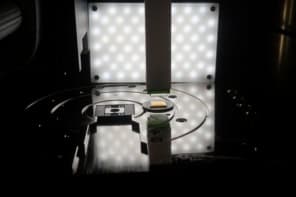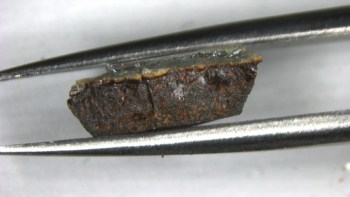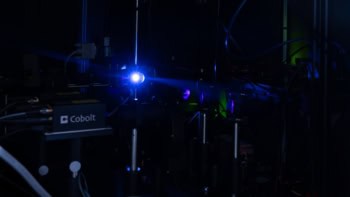Data storage capacity could be increased a thousand-fold following research carried out by materials scientists in the US. Harsh Deep Chopra and Susan Hua of the State University of New York at Buffalo observed ‘ballistic magnetoresistance’ of over 3000% in nickel contacts just a few atoms long. Magnetoresistance is the change in the resistance of material caused by a magnetic field, and allows hard disks to read out magnetic data (H Chopra and S Hua 2002 Phys. Rev. B 66 020403).
Chopra and Hua placed their nanometre-sized contact made of nickel – which is ferromagnetic – between two electrodes that generate alternating magnetic fields of several hundred Gauss. This set-up, which was run at room temperature, rotated the spin axes of electrons travelling along the ferromagnet. This caused the electrons to scatter, and increased the resistance of the contact by 3150%.
The effect is known as ballistic because – with no applied magnetic field – the electrons move in a straight line through the narrow contact. If the contact were slightly longer, the motion of the electrons would be dominated by random thermal movements, which would thwart the scattering effect of the magnetic field.
In a hard disk the contact would act as the read head and be connected to a circuit that would inject it with spin-polarized electrons. By bringing the contact close to each magnetic domain – or data bit – being read, the electrons flowing through the contact would be scattered by an amount that would depend on the magnetic orientation of the bit. Since each bit in a hard disk is about the same size as the head, ballistic magnetoresistance could be used to create storage capacities as large as several terabits per square inch.
Nearly all of today’s hard disks rely on a related effect called giant magnetoresistance, in which the resistance of alternating layers of magnetic and non-magnetic materials can change by as much as 100%. In addition, so-called colossal magnetoresistance has boosted resistances by up to 1400% at room temperature, but it requires fields of thousands of Gauss and materials with a high intrinsic resistance. In contrast, the relatively small magnetic field used by the Buffalo researchers means that even bits just a few nanometres long will produce a magnetic field strong enough to register a signal in a hard disk’s read head.
“This ballistic magnetoresistance is the largest effect yet seen in spintronics, an area of research that utilizes both the charge and spin of electrons to create electronic circuits,” says Chopra. “But it is not only exciting from a technological point of view. It is interesting scientifically because existing theory cannot yet explain it.” Indeed, he points out that the origin of this effect must be more clearly understood before it can be used reliably in electronic devices.



